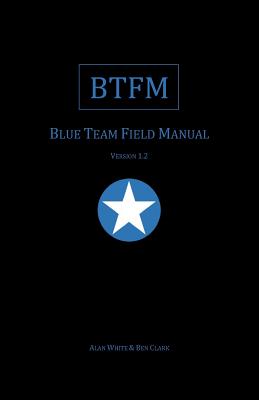Advanced .NET Framework Programming Using C# Training in Blaine
Enroll in or hire us to teach our Advanced .NET Framework Programming Using C# class in Blaine, Minnesota by calling us @303.377.6176. Like all HSG
classes, Advanced .NET Framework Programming Using C# may be offered either onsite or via instructor led virtual training. Consider looking at our public training schedule to see if it
is scheduled: Public Training Classes
Provided there are enough attendees, Advanced .NET Framework Programming Using C# may be taught at one of our local training facilities.
|
We offer private customized training for groups of 3 or more attendees.
|
||
Course Description |
||
| This hands-on course examines how to utilize advanced features of C# and
the .NET Framework in order to build sophisticated, scalable,
high-performing applications. The course includes coverage of features
available in .NET 2.0 through .NET 4.5.
Course Length: 4 Days
Course Tuition: $2250 (US) |
||
Prerequisites |
|
| C# Programming Experience | |
Course Outline |
|
Working with Types
Common Type System
Value vs. Reference Types
Using Nullable Types
Using Inferred Types
Working with Dynamic Data
Object-Oriented Programming
Defining and Using Classes
Understanding Partial Classes
Using Inheritance
Abstract Classes vs Sealed Classes
Understanding System.Object Methods
Understanding .NET Interfaces
Working with Interfaces
Working with Text
Using Strings and StringBuilder
Measuring Performance Using Stopwatch
Working with Data from Other Cultures
Using Pattern Matching and Regular Expressions
Collections and Generics
Understanding .NET Collections
Ordered vs. Unordered Collections
Managing Data with .NET Collections
Defining Generic Methods
Building and Using Generic Classes
Defining Extension Methods
Working with Delegates
Understanding Delegates
Single-cast vs. Multi-cast Delegates
Defining and Using Delegates
Working with Synchronous and Asynchronous Delegates
Understanding the Relationship Between Delegates and Events
Defining and Raising Custom Events
Handling Custom Events
Managing Data with ADO.NET
ADO.NET Object Model
Connected vs. Disconnected Access
Working with Data in Databases
Calling Stored Procedures
Working with Transactions
Managing Connection Pooling
Using the ADO.NET Provider Factory
Working with Untyped DataSets
Working with Typed DataSets
Managing DataViews
Working with XML Data
Understanding XML and XML Schemas
Using XML with DataSets
Using XmlReader and XmlWriter
Manipulating XML Data Using XmlDocument
Querying XML Data Using XPath
Working with XPathDocument
Working with LINQ
Understanding LINQ
Building LINQ Queries
LINQ and Extension Methods
Defining Data Layers Using LINQ
Using LINQ to Objects
Using LINQ to SQL
Using LINQ to DataSets
Using LINQ to XML
Working with Threads
Overview of Threading
Creating Threads
Passing Data to Threads
Returning Data from Threads
Managing Threads
Problems with Threads
Synchronizing Threads
Debugging Threads
Using Async and Await
Working with the ThreadPool
Understanding Thread Pooling
Managing the ThreadPool
Creating Threads Using the ThreadPool Class
Working with the Task Class
Managing Tasks
Working with the Parallel Task Library
Overview of Parallel Programming
Using the Parallel Class
Making PLINQ Queries
Using Concurrent Collections
Assemblies
Understanding .NET Assemblies
Private vs. Shared Assemblies
Where is the Global Assembly Cache (GAC)?
Building and Using Private Assemblies
Defining Strong Names
Building, Installing and Using Shared Assemblies
Configuring Assemblies
Targeting Multiple Versions of .NET
Working with Attributes
Understanding Attributes
Using .NET Attributes
Designing Custom Attributes
Using Custom Attributes
Using Reflection
Understanding Reflection
Extracting Type Information
Using Reflection for Late Binding
Windows Communication Foundation (WCF)
Understanding WCF
Defining Service and Data Contracts
Building a Service
Hosting a Service
Managing Endpoints
Exposing Metadata
Calling a WCF Service
|
Course Directory [training on all levels]
Technical Training Courses
Software engineer/architect, System Admin ... Welcome!
- .NET Classes
- Agile/Scrum Classes
- AI Classes
- Ajax Classes
- Android and iPhone Programming Classes
- Azure Classes
- Blaze Advisor Classes
- C Programming Classes
- C# Programming Classes
- C++ Programming Classes
- Cisco Classes
- Cloud Classes
- CompTIA Classes
- Crystal Reports Classes
- Data Classes
- Design Patterns Classes
- DevOps Classes
- Foundations of Web Design & Web Authoring Classes
- Git, Jira, Wicket, Gradle, Tableau Classes
- IBM Classes
- Java Programming Classes
- JBoss Administration Classes
- JUnit, TDD, CPTC, Web Penetration Classes
- Linux Unix Classes
- Machine Learning Classes
- Microsoft Classes
- Microsoft Development Classes
- Microsoft SQL Server Classes
- Microsoft Team Foundation Server Classes
- Microsoft Windows Server Classes
- Oracle, MySQL, Cassandra, Hadoop Database Classes
- Perl Programming Classes
- Python Programming Classes
- Ruby Programming Classes
- SAS Classes
- Security Classes
- SharePoint Classes
- SOA Classes
- Tcl, Awk, Bash, Shell Classes
- UML Classes
- VMWare Classes
- Web Development Classes
- Web Services Classes
- Weblogic Administration Classes
- XML Classes
Business Training Courses
Project Managers, Business Analysts, Paralegals ... Welcome!
Upcoming Classes
Gain insight and ideas from students with different perspectives and experiences.
- Python for Scientists
8 December, 2025 - 12 December, 2025 - Introduction to Spring 6, Spring Boot 3, and Spring REST
15 December, 2025 - 19 December, 2025 - RED HAT ENTERPRISE LINUX SYSTEMS ADMIN II
8 December, 2025 - 11 December, 2025 - Fast Track to Java 17 and OO Development
8 December, 2025 - 12 December, 2025 - ASP.NET Core MVC (VS2022)
24 November, 2025 - 25 November, 2025 - See our complete public course listing
C# Programming Uses & Stats
C# Programming is Used For:
Windows Applications
Business Enterprise Applications
Software Development
Web Applications
|
Difficulty
|
Popularity
|
Year Created 2000 |
|
Pros
In Demand:
C# along with Java is one of the top languages in demand for employers.
.Net Library:
C# is integrated with the .Net Library thereby providing access to a vast archive of functionality and support.
Team Friendly:
Multiple developers can easily work together on a project.
Compiled Language:
The code that is stored on a public-facing server is in binary form. In other words, if your server gets hacked, the hacker doesn't automatically have access to your source code.
Transferable:
C# roots are derived from C which means that the structure is transferable to other languages like Java, Objective C, PHP and C++.
|
Cons
Steep Learning Curve:
Windows Application Exclusively:
Any .NET application needs a Windows platform to execute which means that companies using Linux servers would need Windows hosting to run a .Net application.
Lack of Support for Older .NET:
Many enterprise organizations keep older operating systems because of the many problems that an upgrade can bring to the platform. Microsoft stops supporting older .NET frameworks after a few operating systems upgrades.
|
| C# Programming Job Market |

Average Salary
|

Job Count
|

Top Job Locations
New York City |
|
Complimentary Skills to have along with C# Programming
Since the .NET development ecosystem spans a wide array of capabilities and tools, it is difficult for .NET developers to know which .NET development skills and training to pursue in order to increase their marketability — and earning potential. For that reason, learning supplemental languages such as Java, JavaScript, Python, C/C++, and others is expected in today’s competitive skill-set driven playing field. |






